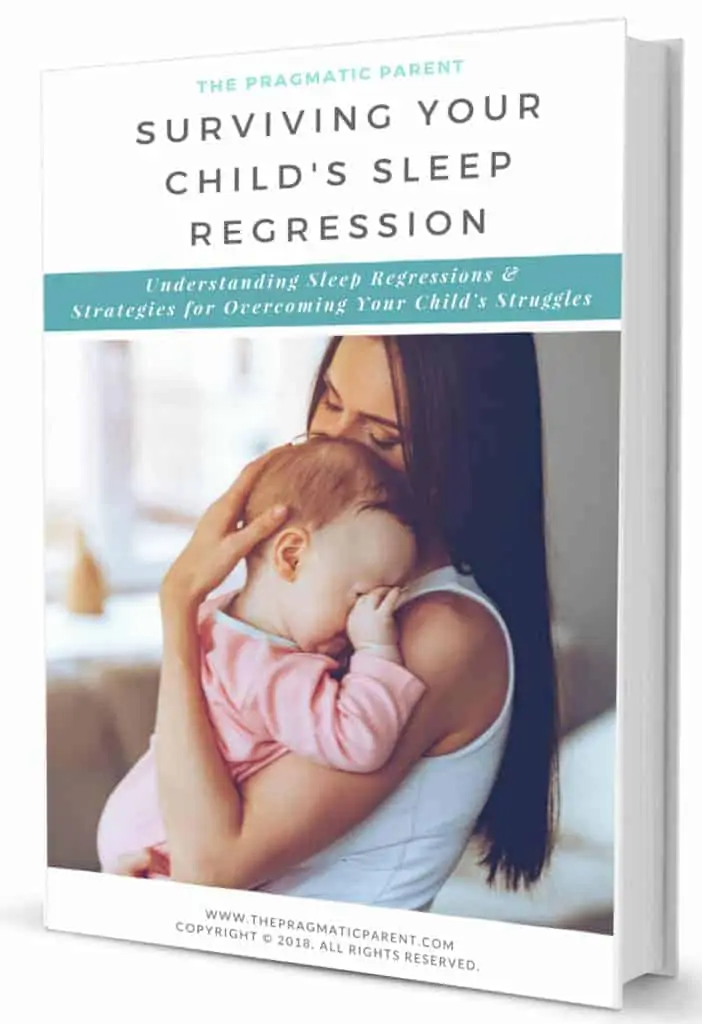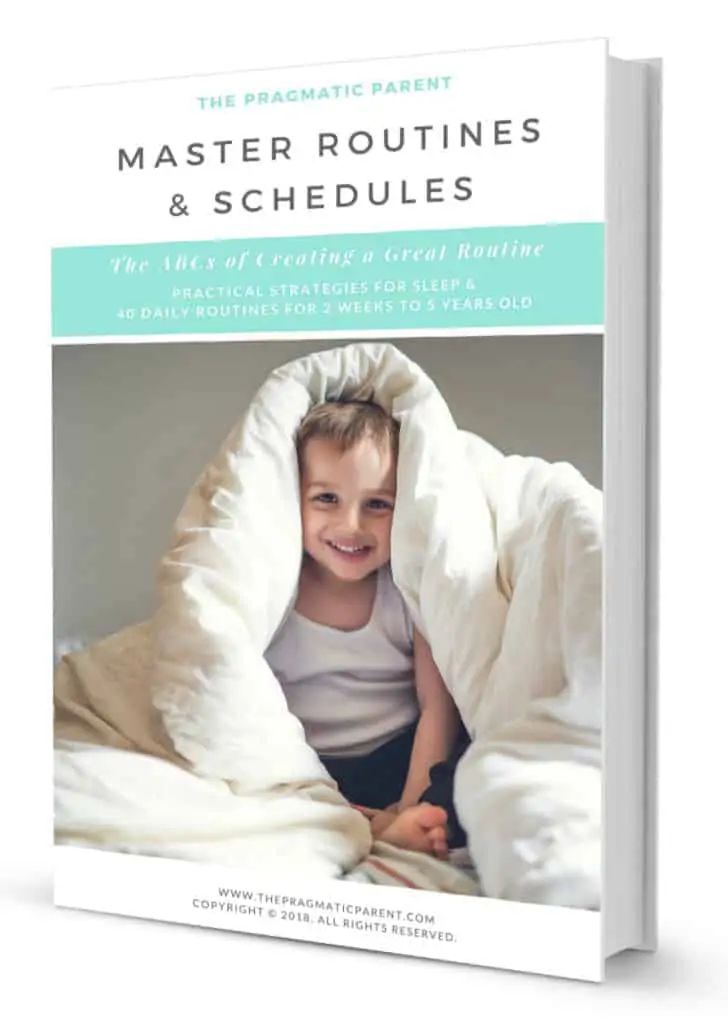Is your baby refusing to nap or shortening their nap on their own? You might have a nap transition coming on. Signs your baby is ready to drop a nap and what to do. If your baby is ready to drop their naps, how to spot a nap transition coming on and gently help your baby drop a nap. Do you drop the afternoon nap or the morning nap first? Learn when common nap transitions occur, and how to handle these nap challenges.
Things seems to be going well. Your baby or toddler is finally on track, the daytime routine is working and bedtime is becoming – knock-on-wood – easier.
Life feels somewhat predictable and then suddenly, things start getting off track. Oh no!
The first few years of your baby’s life is full of changes, growth spurts, milestones, and parents work hard to establish a solid nap schedule and bedtime routine because this is one of the biggest components to your baby’s temperament (and then there’s always your sanity and level of sleep deprivation which are affected too…)
From newborn to preschool aged, your baby will go from sleeping nearly all day, to taking four or five naps and eventually weaning down to a single nap before they give it up entirely between the age of 3 to 5.
Sleep schedules are a revolving door or adjustments and pain points, but you can spot a nap transition when you know the signs and help your child ease into an updated nap schedule.
How to Spot a Nap Transition is on its Way
Signs your baby or toddler is trying to tell you they need to adjust their nap schedule and a transition is heading your way. These are common tell-tale signs babies and toddlers use to communicate their schedule needs some tweaking.
- Your Baby is Refusing to Nap: Your baby or toddler starts to refuse naps suddenly. Generally this is the afternoon nap they will fight you on, having already taken the morning nap there are rested and need less sleep and more awake time. This can come on suddenly when just yesterday, and for the past month, your baby had been falling asleep no problem.
- Bay is Shortening Their Nap Nap: When your baby begins to shorten one or more naps consistently over a weeklong period, this is a sign it’s time to drop a nap.
- Your Baby is Fighting the Start of Naptime: When your baby or toddler, who up to this point has been falling asleep for their nap at the same time each day, suddenly fights off the start of naptime, has trouble falling asleep for more than 30 minutes or pushes their nap by a significant amount of time, it might be time to remove a nap from your daily routine.
When putting your baby down is a struggle, this behavior is telling you a nap transition could be heading your way! (Plus, napping too late in the day starts to interfere with bedtime and that’s a whole new battle you don’t want to fight when it’s going so well already!)
IS IT A SLEEP REGRESSION OR NAP TRANSITION?
Understanding your child’s body language and sleep signals if they’re ready to move to one nap a day or might only be going through a sleep regression can be tough.
Take the Sleep Litmus Test to see if it’s time to transition to one nap a day or if your child isn’t *actually* ready to give up a nap.
SLEEP LITMUS TEST
If you make the switch before your child is ready to give up one nap, this can cause an onslaught of problems like a sharp increase in night-waking, overtired and cranky moods and being more prone to outbursts which can be difficult to remedy.
Make sure your baby passes this sleep litmus test before you make a big switch.
1. Waking Up at Night:
Your child make seem more energized and you may think it’s time to switch to one nap, but their brain could be really exhausted. Are you seeing an increase in night-wakings? This is a surefire sign he is exhausted and struggling with sleep because of being overtired.
2. Does he sleep through the night consistently?
Toddlers who are getting 10-11 hours of quality, uninterrupted sleep all night long may be ready to make the transition. Kids who aren’t sleeping through the night, are not ready.
How long does it take to fall asleep for the FIRST nap?
3. Falling Asleep at Naptime?
When you put your son to sleep for the first nap, is he falling asleep quickly or is there a gap between when you put him down and when he falls asleep? Track for a week or so how long of time is takes for your child to fall asleep. A big, and consistent chunk of time to fall asleep may mean it’s time to push back the morning nap to a single, mid-day slumber.
Consistent patterns of change in your baby’s sleep over the course of two weeks indicate it may be a good time to transition down a nap.
Need a little extra help starting or adjusting your daily routine? Here’s a FREE Course that will help you take control & bring more peace to your home.
How to Handle a Nap Transition: Drop baby’s Nap
When you decide it’s time to remove a nap from the routine, some babies can fuss through a couple days of change and get on board with a new nap schedule right away, while others need help easing into a routine with one less nap.
Check out the Master Routines & Schedules Ebook which is 70-pages of jam-packed information and includes 40+ sample routines. It also has all the tools to help you adjust your routine and removed naps when ti’s time.
OPTIONS TO TRY BEFORE DROPPING A NAP
If your child is still taking two naps a day and the morning nap goes well but she wakes up early from the afternoon nap, you may try shortening the morning nap to spread out the rest between the two. Here are some examples:
- Morning nap is 1.5 hours.
- During the afternoon nap, your daughter wakes up at 1 hour and is cranky for the rest of the day.
- Shorten the morning nap to be 1 hour and 15 minutes and this will balance out the afternoon nap to be the same and give her the rest she needs.
TRANSITIONING TO ONE NAP A DAY
The phase between needing one and two naps a day is murky and your child can struggle with the limbo trying to figure out what they need for a couple weeks. This is where, when you decide it’s time to make the move, you can steer them towards a single mid-day nap by adjusting the routine.
Start by pushing the morning nap later and later by 20 minutes for a couple of days. Your goal is to eventually push the single nap to lunchtime without putting them to bed at the point where they’re exhausted.
- Old Normal: 10am Morning Nap
- Days 1 – 2: 10:20am Nap
Days 3 – 4: 10:40am Nap - Days5–6: 11am Nap
- Days 7 – 8: 11:20am Nap
- Days 9 – 10: 11:40am Nap
- Days 11 – 12: 12pm Nap
If your child gives up their morning nap but can’t make it to the afternoon nap without melting down, and you think you’re ready to move to one nap a day, set a new naptime meeting in the middle of the two naps.
For example:
- Morning nap was at 10am and the afternoon nap was at 2pm.
- Set the one nap a day at 12pm so you aren’t putting them to sleep overtired but also not early enough so they’re overdue for bedtime.
Your tired toddler should be sleeping approximately two hours once they move to a single nap. If they wake up too early, try to let them self-soothe or help them soothe themselves back to the sleep for the remainder of the nap.
Until your toddler gets the hang of the mid-day nap, you may need to put them in the car seat for a quick drive or push them in the stroller around the neighborhood for a quick cat nap in the afternoon so they don’t hit bedtime at the point of melting down.
When needed, it’s also OK to let your toddler take two naps when they seem like they require extra rest or life has gotten particularly busy lately. An occasional double nap day could help them get back on the track.
ADJUST BEDTIME TO HELP WITH NEW NAPTIMES (& MAKE DROPPING A NAP EASIER)
As your child moves to a single nap, you’ll want to watch bedtime and possibly move it earlier. As a rule of thumb, you don’t want to put your baby to sleep after the point where they’re overtired, cranky and melting down. You want to put them to sleep BEFORE this time.
A child who is overtired will fight bedtime and have a harder time putting themselves to sleep peacefully.
Stick to your bedtime routine, but bump dinner a little earlier and push bedtime up by 30 minutes or as necessary based on your child’s mood and temperament at nighttime.
Download Your Routine Tracker – The Starting Place for Creating a Better Routine and Great Sleep Habits
Common Nap Transition Phases: When Does My Baby Need to Drop a Nap?
Each baby is unique as are her sleep needs and your family’s routine. There is no set schedule to witling down naps from the newborn stage to preschool aged.
These are the common time frames for nap transitions:
- Newborns & Baby (1-5 months): Naps are anywhere from 4-5 daily and depend upon how much wake time your baby has in between each sleep time. Around the 4-5 month mark, your baby is be closer to 4 longer naps a day and have a bedtime routine with bedtime in place.
- Baby (5-9 months): Generally, babies age 5 – 8 months will nap three times per day. Some babies who nap for a longer stretch of time will only nap twice a day.
- Toddler (10 – 15 months): Many people think that around the one year mark, most babies can transition to one nap a day. However, the average for moving from two naps down to one is between 15-18 months.
- Eliminating Naps: Toddlers will nap once a day for 1.5 – 2.5 hours until the average age of 3-4 years old, although some kids will nap all the way up until Kindergarten begins.
Helpful Resources for Handling Sleep Problems, Sleep Regression & Mastering Your Routine
For a more thorough explanation and resource of keeping a routine, Check out the Master Routines & Schedules Ebook which is 97-pages of jam-packed information and 40+ sample routines. All the tools, sample schedules, sleep tracker and strategies for every age and stage of development for 2 weeks to 5-years-old. Learn how to start the process of creating a routine, establishing wake up and bedtimes, strategies for working through nap transitions, prepping for daylight savings time to keep your routine on track and logging your baby’s sleep patterns to rocking a solid schedule through every age of growth.
Surviving Your Child’s Sleep Regressions Ebook
You Might Like…
- Toddler Sleep Regressions: What You Need to Know About Your Two Year Old’s Sleep
- How to Establish a Peaceful Bedtime Routine for Your Baby
- How to Survive the 18 Month Sleep Regression & 2 Year Sleep Regressions Without Going Crazy
- Comprehensive Sleep Charts & Sleep Guidelines for Infants Through Adolescents
- The Benefits of Having a Daily Routine
- Create an Awesome Routine for Better Sleep Habits
Want even more?
Shop All Parenting Resources
Shop all of our parenting resources from self-regulation tools and managing big emotions to building self esteem and confidence. There are resources for all seasons of life!









